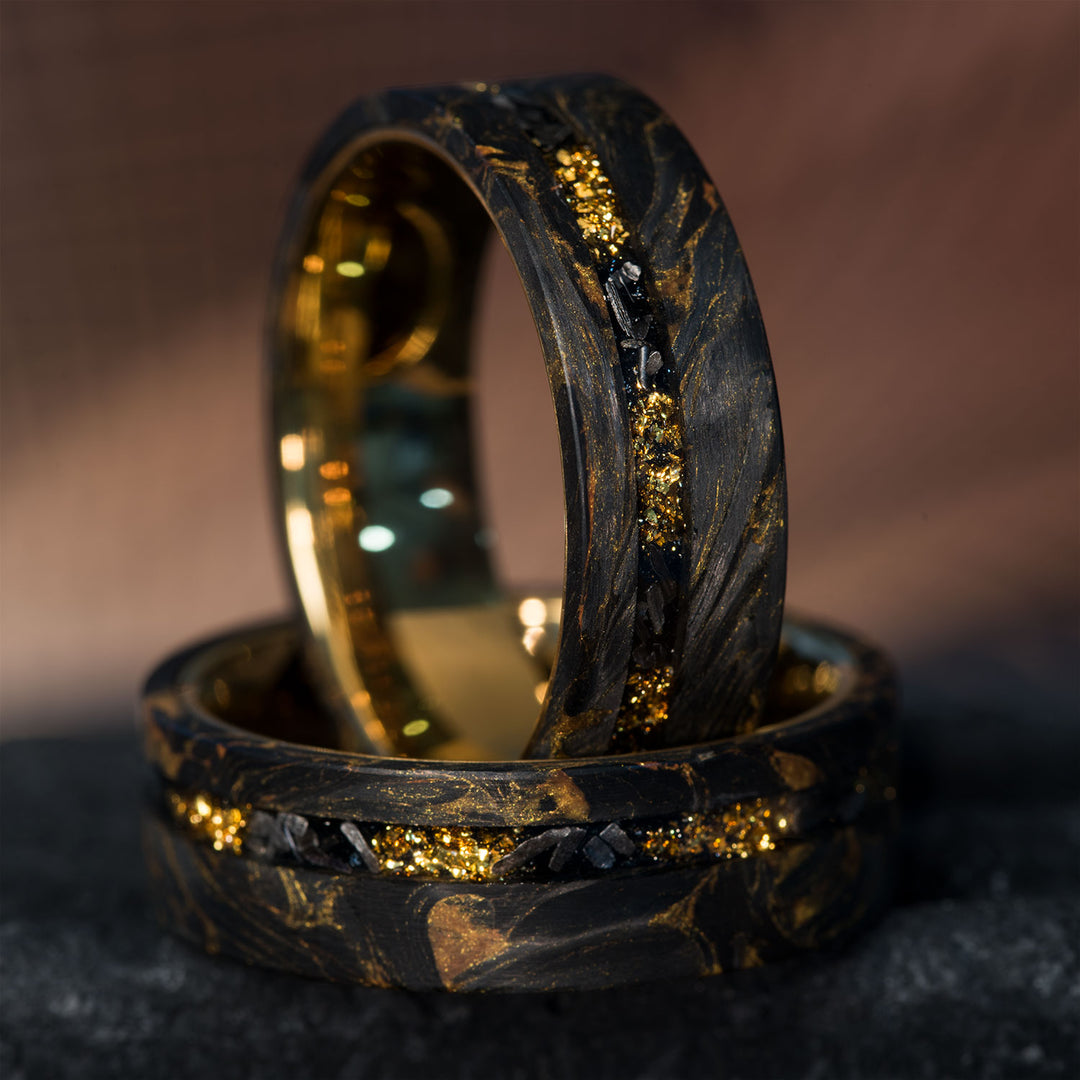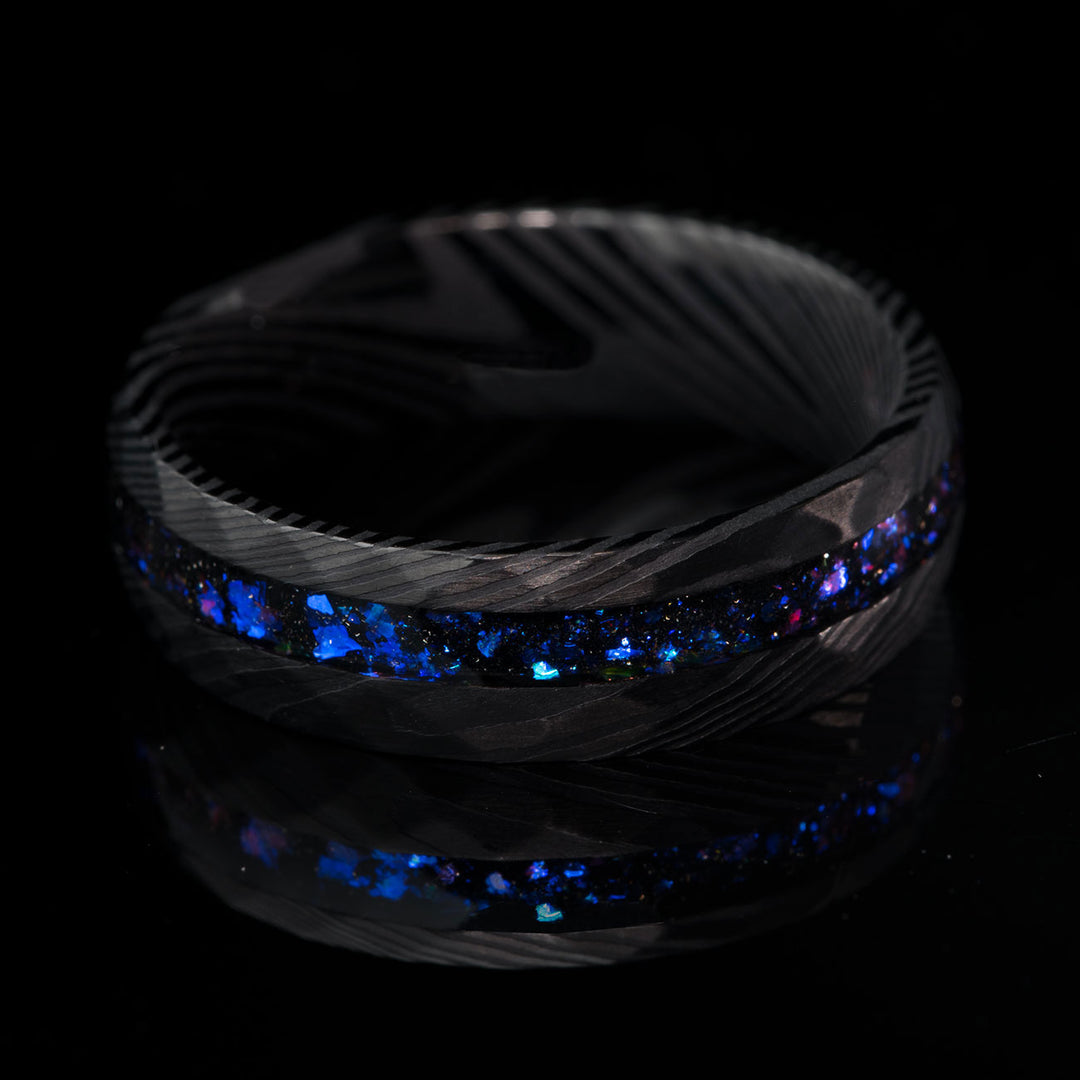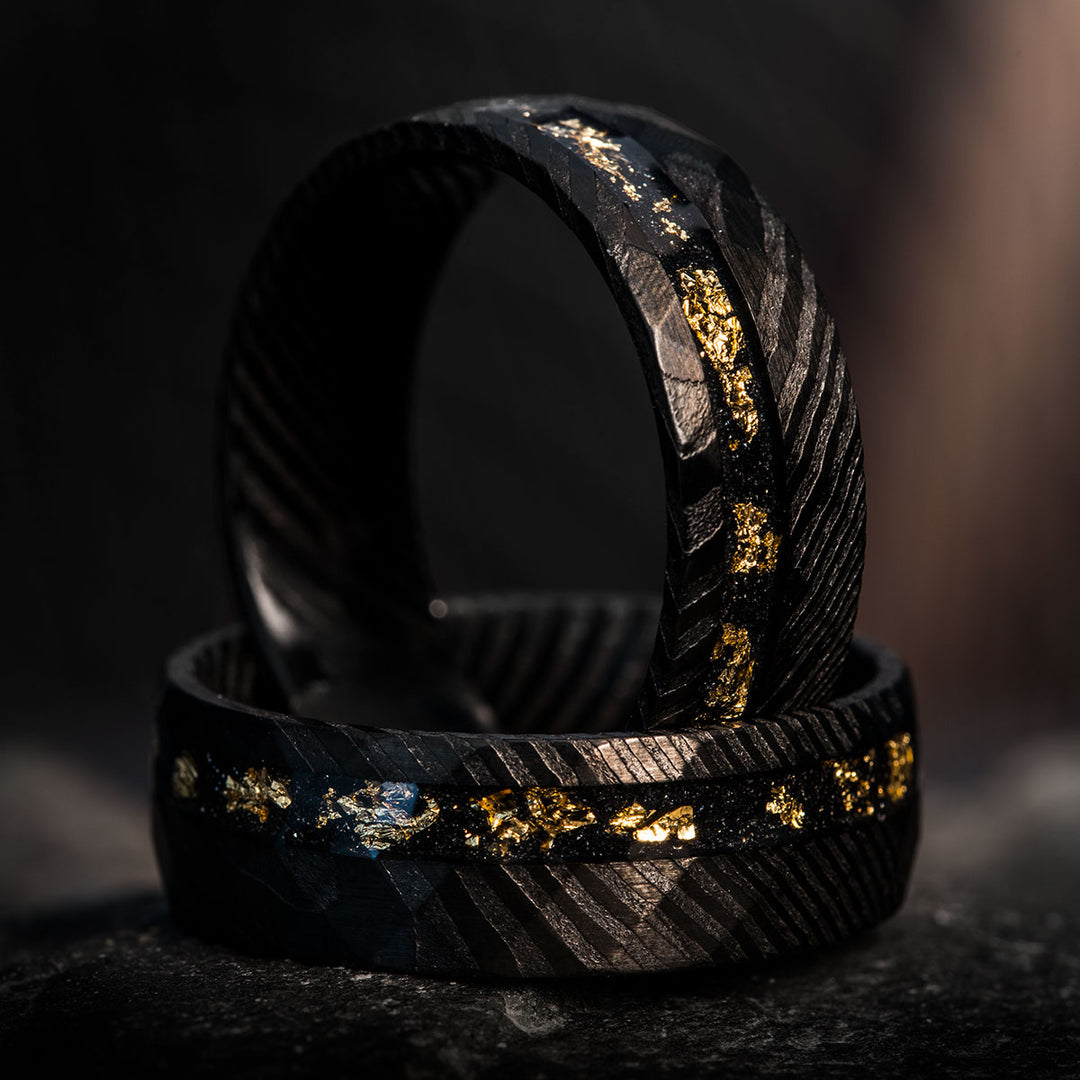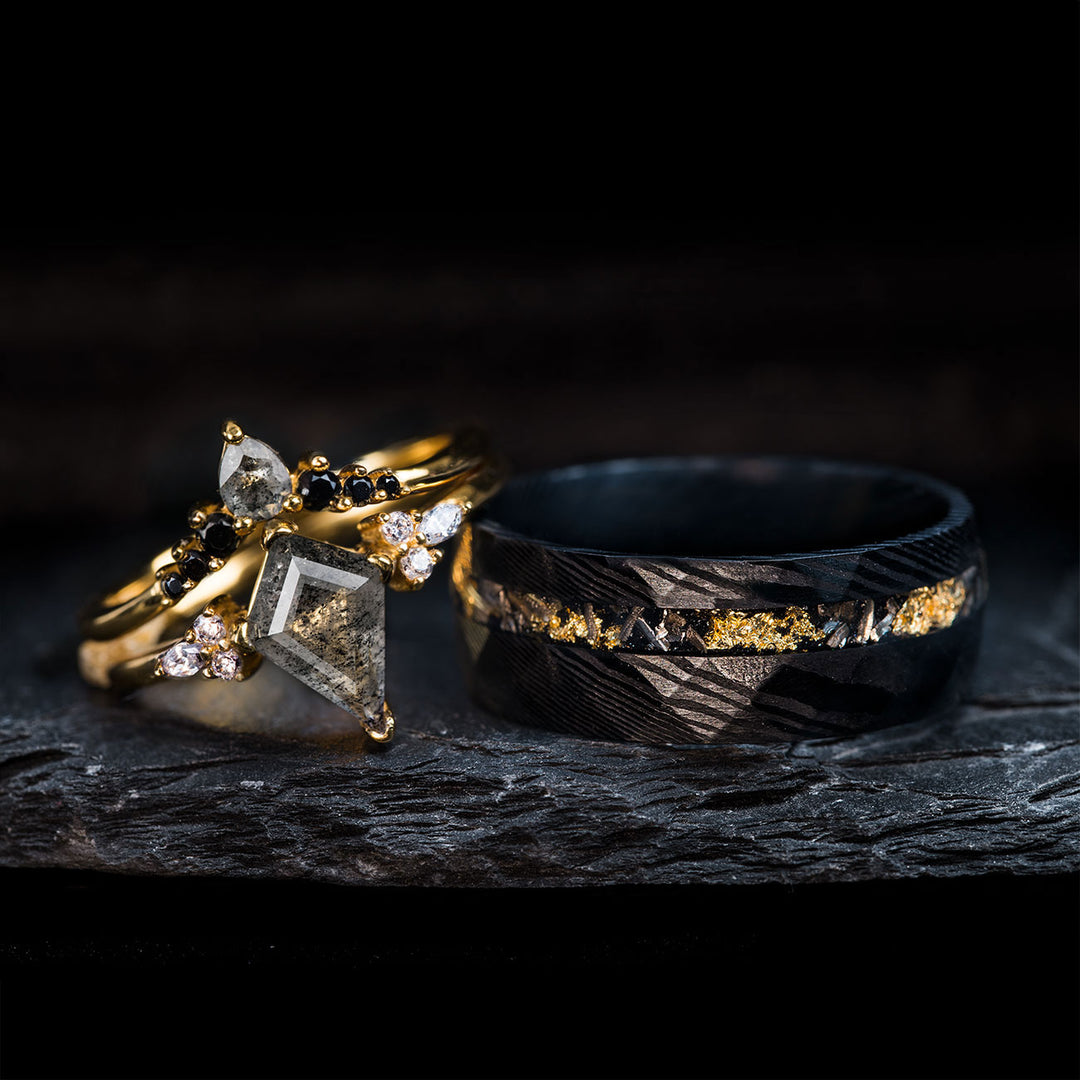| Profile Name | Cross-Section Shape | Overall Style | Comfort & Fit |
|---|---|---|---|
| Court Profile | Gently rounded on both the inside and outside. | Traditional and timeless, it works with nearly any ring. | Exceptionally comfortable for all-day wear due to smooth, curved edges. |
| D-Shape Ring | Curved and domed on the outside, but flat on the inside. | A classic, rounded appearance on top. | Provides a secure, flat fit against the finger. |
| Flat Profile | Flat on the top, bottom, and sides, creating a rectangular shape. | Clean, modern, and architectural, it makes a bold statement. | A very snug fit, as the entire inner surface touches the finger. |
| Flat-Court Profile | Flat on the outside for a modern look, but rounded on the inside. | A hybrid style that blends contemporary and classic elements. | Combines a sleek appearance with the softer, comfortable feel of a court ring. |
| Beveled Edge | A flat top surface with sides cut at an angle. | Modern and sophisticated; strikingly catches light. | Offers a secure fit with a unique, character-filled design. |
| Knife Edge | Two sides slant upwards to meet at a sharp, central line. | Bold, distinctive, and geometric, makes the band appear thinner. | Provides a dramatic and unconventional look and feel. |
You've probably thought about the metal and the finish for your wedding ring. But there's a small detail that makes a huge difference in how it feels all day long: the shape of the band itself. If you were to slice the ring and look at the cut edge, the shape you'd see is its "profile." This tiny feature determines if the ring feels comfortable and natural or bulky and awkward. Getting this right is the secret to finding a ring that truly feels like a part of your hand.
What Exactly is a Ring Profile?

A ring's profile, or its cross-sectional shape, is a fundamental aspect of its design. It dictates how the ring sits on your finger, how it feels during daily activities, and its overall visual style.
A ring profile is the shape you would see if you sliced through the band and looked at it from the side. This shape can be curved, flat, or a combination of both on its inner and outer surfaces. The profile influences everything from how easily the ring slides over your knuckle to how it pairs with an engagement ring. Choosing the right one is a key step in finding a ring you'll love to wear for a lifetime.
How Ring Profile and Ring Width Affect Comfort and Fit
The comfort of your wedding ring isn't just about size. It's also about the band's shape, width, and thickness. A ring that fits your hand and lifestyle will feel secure and so easy to wear, you'll hardly notice it's there.
Standard Fit vs. Comfort Fit
The fit is mostly controlled by the inside of the band. Rings typically come in two styles:
Standard Fit: This traditional design has a flat interior that sits flush against your skin. It provides the most contact and has a very snug, secure feel.
Comfort Fit: A more modern option, this design has a rounded interior. This curve reduces friction, so the ring slides on and off more easily, which is especially helpful for larger knuckles. Many people find it more forgiving if their fingers swell from heat or activity. Because it feels a little looser, you might need a half-size smaller than your usual size.
Ring Width and Thickness
The band's dimensions also affect how it feels. Ring width is how much space the band takes up across your finger. Wider bands (6mm and up) have a bold look but can feel tighter, while narrower bands (2mm-4mm) are lightweight and popular for stacking. Ring thickness is the depth of the metal. A thicker ring is more durable and substantial, making it great for an active person. A thinner ring is more delicate and sits closer to the finger.
Exploring Popular Wedding Band Shapes

Various wedding ring profiles provide different amounts of style and comfort. Knowing the most popular shapes will allow you to shorten your list of options and select the most suitable option for your hand as well as your personal style.
Court Profile / Court Shape
This is the most traditional and popular ring shape, often called a "Traditional Court." It's gently rounded on both the inside and the outside, creating a soft oval cross-section. The smooth, curved edges make it incredibly comfortable for all-day wear. Its timeless appearance works well with nearly any engagement ring.
D-Shape Ring
This ring gets its name from its profile, which looks like the letter "D." The outside is curved and domed, but the inside is completely flat. This gives you a classic, rounded look on top with a secure, flat fit against your finger. Some D-shaped rings have a slightly curved interior for added comfort.
Flat Profile / Flat Shape
For a clean and modern look, the flat profile is a top choice. The band is flat on the top, bottom, and sides, giving it a sharp, rectangular shape. Because the entire inner surface touches your finger, it has a very snug fit. This architectural style is perfect for a bold statement.
Flat-Court Profile
This hybrid shape gives you the contemporary style of a flat band with the all-day comfort of a court. The outside of the ring is completely flat for a modern appearance, but the inside is rounded for a softer feel. It's an ideal choice if you love the sleek look of a flat ring but want a more comfortable fit.
Bevelled Edge Profile
A bevelled edge adds a unique touch to a flat band. It has a flat top surface, but the sides are cut at an angle. This creates three distinct faces on the outside of the ring that catch the light in a striking way. It offers a touch of modern sophistication and character.
Knife Edge Profile
The knife edge is a bold and distinctive design. The band is formed by two sides slanting upwards to meet in a sharp line that runs down the center. This pointed ridge creates a dramatic, geometric look and can make the band appear thinner than it actually is. It's a great option for an unconventional, contemporary style.
A Practical Guide to Choosing a Wedding Ring Profile
Picking the right profile comes down to finding a balance between your personal style and your daily life. Your ring should feel great on your hand and fit your routine perfectly.
Match the Ring Profile to Your Lifestyle
Think about your day-to-day activities. If you have an active job or work a lot with your hands, you'll want a durable shape that won't get in the way. The smooth, rounded edges of a Court Profile prevent snagging and feel good during physical tasks. A Flat Profile also works well, as it sits close to the finger and is less likely to catch on things.
Align the Ring Shape with Your Personal Style
Your wedding band reflects your taste.
- For a timeless and classic look, the Court Profile is a perfect choice.
- If you prefer a clean, modern style, a Flat Profile or a Bevelled Edge offers a sharp, contemporary look.
- The D-Shape provides a traditional appearance with a solid, substantial feel on the finger.
Pair it with an Engagement Ring

If you're wearing two rings together, especially if you need to pair the wedding band with the engagement ring, then their shapes should complement each other. A classic Court band usually sits nicely next to a traditional solitaire. If your engagement ring has a large stone or a low setting, a specially curved wedding band can be designed to fit snugly against it, leaving no gap. Flat wedding bands often pair beautifully with channel-set engagement rings for a unified, seamless stack.
Prioritize Ring Comfort
The most important detail is how the ring feels to you. Try on different profiles to see what you like. Do you prefer the snug security of a flat interior or the smooth glide of a rounded one? Remember, your fingers can swell slightly with changes in temperature or activity. A truly comfortable ring will feel good all day. If possible, wear a sample ring for a few minutes to make sure it feels right as you move your hand.
Final Thoughts on Wedding Ring Profiles
Your wedding band profile is a small aspect that has a tremendous influence. It establishes the character of your band and is the key to all-day comfort. Considering your lifestyle, personal style, and the feel of the band on your finger, you can make an informed decision and select a ring that is a beautiful expression of your vows and a joy to wear daily.
FAQs About Wedding Band Shapes
Q1: What is the most comfortable wedding ring profile?
A: The Court Profile ring is generally the most comfortable since its interior and exterior are both curved, and therefore, pressure is reduced for the finger. Any ring with a Comfort Fit—a curved interior—is designed with increased wearability in mind.
Q2: Which ring profile is best for an active lifestyle?
A: A Flat Profile is usually suggested for active individuals since its low profile won't easily catch on equipment or clothing. Thicker metal rings, or Heavy-duty Ring Thickness (approximately 2.2mm to 2.5mm), are also stronger.
Q3: Does my wedding band need to match my engagement ring?
A: There are no strict rules, but one popular option is a coordinated set. A matching metal and the Ring Profile can create a seamless appearance. For instance, a flat-sided court profile can sit flush against an engagement ring that also has a flat side. Some jewellers can even 3D scan your engagement ring to provide you with a perfectly matching curved wedding band.









